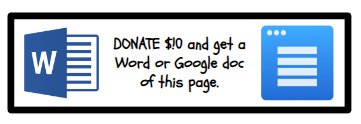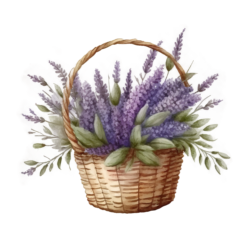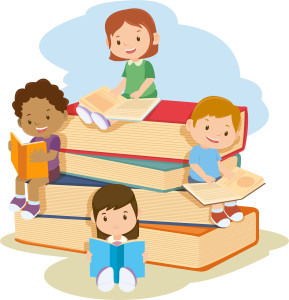

Genre Guide
Picture Books. Children’s books provide a story through pictures. There may or may not be text with the book. The content of the book can be fully explained or illustrated with pictures. Picture books might not tell stories – they might illustrate letters of the alphabet or numbers. There are also fun books for young, non-reading children to play with. Again, children can tell the story based on the illustrations, pretending to “read” the book.
FICTION GENRE
Traditional Literature or Folklore. Stories from various cultures are passed down from generation to generation, changing slowly over time. They provide a link between the past and the future. Traditional literature is a great starting point to introduce children to the concept of a story. Traditional literature includes:
* Folktales. These feature everyday “folks,” such as peasants, and commonplace events. There may be some “make-believe” elements, like talking animals, but the stories sound logical – even realistic overall. Folktales seek to explain life, nature, or the human condition. Some folktales are cumulative, in which one event builds on another, such as in the Gingerbread Boy.
* Fairy Tales. Fairy tales feature magical and enchanted forces. They always have a “happily ever after” ending, where good is rewarded, and evil is punished. Usually, the element of 3 is used: 3 Little Pigs, getting 3 wishes, Goldilocks and the 3 Bears. . . .
* Fables. Short stories with animals and other inanimate objects talking to teach us a moral (or lesson). The moral is written at the end. Aesop is credited for writing these during the 6th century BC. The title usually contains the character names.
* Pourquoi Tales. These tales explain “why” or “how.” A Pourquoi tale is a story that has been passed orally in culture to explain creation, nature’s elements, people’s actions, or animal characteristics. The characters are people, animals, or nature, and one main character changes in the end. The setting is earthly and takes place long, long ago. The plot tells how or why something changed from how it used to be to today. Why Mosquitoes Buzz in People’s Ears is a Pourquoi tale.
* Trickster Tales. These tales have a clever animal or person who tricks other characters. These are often humorous stories, with a moral or message stated or implied. They are written to sound like someone is telling the tale aloud. Brother Rabbit: A Cambodian Tale is an example of a trickster tale.
* Legends. While based on history, these stories embellish the life of a real person. Legends are known as hero tales. The facts and adventures of the person are exaggerated, making the individual famous for their deeds, such as the Legend of the Bluebonnet.
* Epics. Epics are similar to legends, although an epic tends to be longer. An epic is a narrative poem recounting actions, travels, adventures, and heroic episodes. The hero embodies the ideals most desired by a particular society. The setting is earthly but not always realistic. The number three is sometimes used in epics involving a magic weapon or clothing. The Iliad and The Odyssey are epics.
* Tall Tales. A tall tale is a type of legend but less serious than a legend. It is typically American. It is not technically folklore because tall tales were not originally oral, but they depict legendary characters. The characters are larger and more robust than life and may be imaginary or based on a real person. The setting is usually America in the frontier days. The hero can accomplish impossible things while facing a powerful enemy or solving a complex problem. An example of a tall tale is John Henry.
* Myths. Myths represent the distant past. They contain common themes and characters, often “gods.” Myths attempt to explain the beginning of the world, natural phenomena, the relationships between the gods and humans, and the origins of civilization. Myths, like legends, are stories told as though they were true.
Historical Fiction. Historical fiction is set in a historical period with a real setting and gives information about that period and events. Historical fiction may be based on actual people in history, but often the characters are purely fictional. Authors use historical fiction to create drama and interest based on actual events in people’s lives. These types of books can be powerful teaching tools. Often, historical fiction presents history from the point of view of young participants. Children’s historical fiction attempts to help readers see how history affects people of the same age.
Fantasy. These are imaginative tales that include impossible elements. The setting may be any place, any time. The stories may be based on animals that talk, magical powers, mythical beings, elements of science fiction, supernatural or horror, or combinations of these elements.
* Science Fiction. A book with a futuristic setting that tests the limits of science and technology. Science fiction can be set on another planet or contain robots, time travel, etc. It involves partially true theories of science.
Realistic Fiction. Books with realistic characters, a realistic setting, and realistic events/plots. It COULD happen, but it didn’t. Realistic fiction’s positive aspect allows readers to “experience” different settings, cultures, and situations than their own lifestyle. Children’s realistic fiction features main characters of approximately the age as the intended audience. The books present a “real-world” problem or challenge and show how a young person solves that problem. Children’s realistic fiction is upbeat, showing young readers how they, too, can conquer their problems. Examples of types of realistic fiction include family, peers, challenges, animals, sports, diversity, moral choice, romance, adventure, and rites of passage.
* Mystery. A book with something unsolved or unknown. It may be realistic or not. The characters may include one or more detectives trying to solve the crime and suspects. The tone of a mystery is strange, unexplained events, vague threats or terrors, unknown forces, or antagonists. The mystery is not solved until the end of the story.
* Adventure. Adventure stories are dominated by action involving danger, risk, and excitement. Sometimes if it’s a humorous adventure, the danger isn’t “played up.” The action is fast-paced. The setting is usually an exotic or distant place with extraordinary events.
NONFICTION GENRE
Nonfiction or Informational Books. Books containing factual information about various topics are designed to help readers learn more about real things. Nonfiction is challenging because students have varying background knowledge or interests. The challenge is to match high-interest topics with appropriate reading levels and background knowledge. The best way to reach out to “unmotivated readers” is to find a high-interest topic and a book that matches that young reader’s abilities and understanding.
Biography. A book about an actual person written by somebody else. It is a form of nonfiction. Biographies are usually used to introduce students to nonfiction. Biographies can also be highly motivating – young children love to dream about what they will be when they grow up. The lives of famous, influential people let children see how growing up shapes the opportunities, choices, and challenges people face.
Autobiography/ Memoir. When the author tells his/her own story.
OTHER GENRE
Poetry and Drama. Poems are “stories” written in verse form to create a response of thought and feeling. Poems often have rhythm and rhyme, or they can be free verse. Poems and drama are essential genres that introduce children to poetry, prose, rhythm, rhyme, writing styles, literary devices, symbolism, analogies, and metaphors. Drama has stage directions and italic words that are unspoken thoughts or actions.
Here are genre worksheets!
![]()


